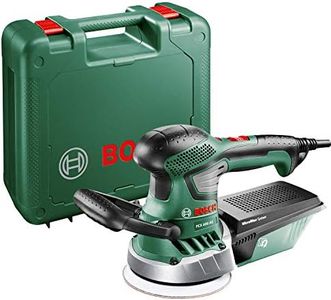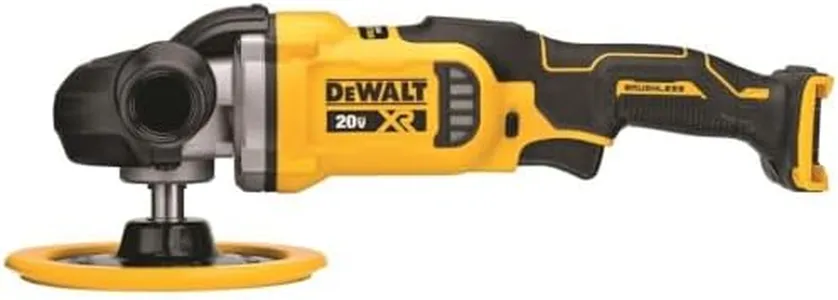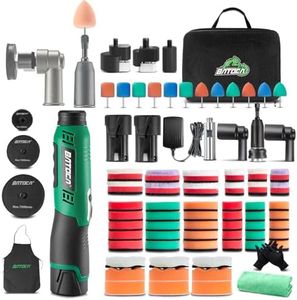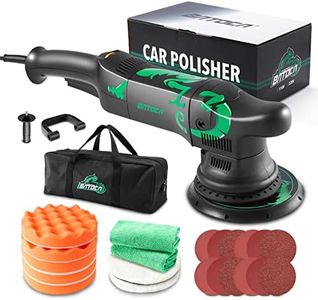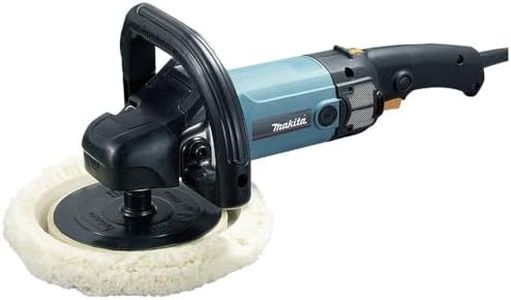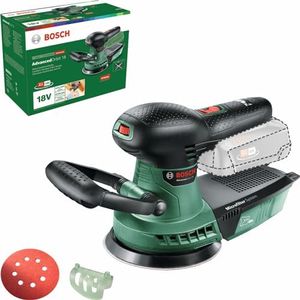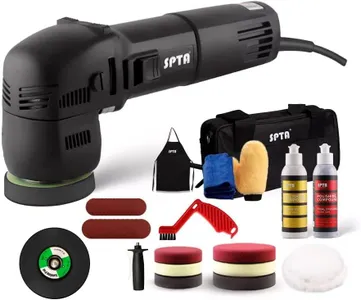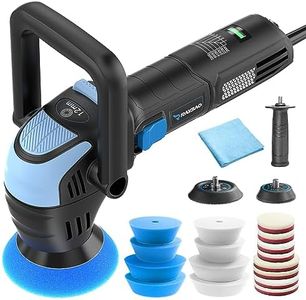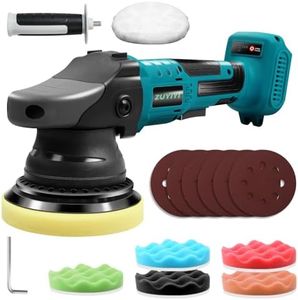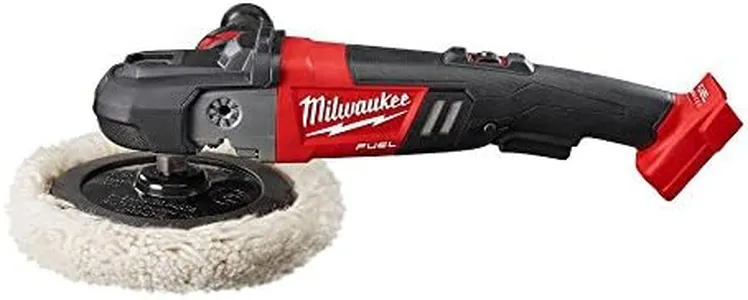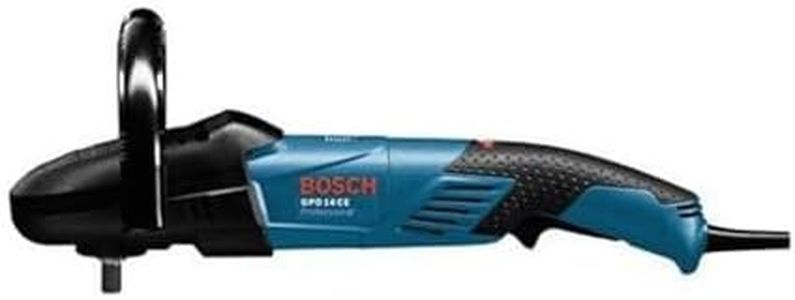We Use CookiesWe use cookies to enhance the security, performance,
functionality and for analytical and promotional activities. By continuing to browse this site you
are agreeing to our privacy policy
10 Best Orbital Polisher Buffers
From leading brands and best sellers available on the web.Buying Guide for the Best Orbital Polisher Buffers
Choosing the right orbital polisher buffer can make all the difference in achieving a smooth, polished finish on your car or other surfaces. With many options available, it's important to focus on the specs that matter most for your personal use, whether that's for occasional touch-ups or frequent, heavy-duty work. Understanding the main features will guide you toward a model that suits your experience level and the types of tasks you'll be handling.Motor Power (Wattage)Motor power refers to how much electrical energy the buffer consumes and transforms into usable rotation. This spec is important because it determines how effective the buffer is at handling tougher jobs or larger surfaces. Lower power (around 300-500W) buffers are usually lighter and easier to control, suitable for beginners or light detailing. Medium power (500-800W) suits more regular usage and balances ease of use with efficiency. High power models (800W and above) can handle more demanding tasks and professional use but might be heavier and harder for beginners to manage. Think about how often and on what surfaces you plan to use the buffer—if you do a lot of polishing and want fast work, higher power is helpful, but for occasional, light jobs, lower power will suffice.
Orbital Speed (OPM - Orbits Per Minute) and Speed ControlsOPM tells you how quickly the pad oscillates, which affects how fast and efficiently you can polish. Variable speed controls let you adjust the OPM, making the tool more versatile for different tasks, like gentle waxing or more aggressive paint correction. Lower speeds (2000-3000 OPM) provide more control and are safer for delicate jobs, while higher speeds (4000+ OPM) cover ground faster but require a steady hand to avoid mistakes. If you want flexibility, especially for both finishing and correction, look for a model with a wide speed range and easy adjustments. If you're usually working on a single task, a fixed-speed unit set at the appropriate OPM might be sufficient.
Pad SizePad size refers to the diameter of the polishing pad the buffer can accommodate. Smaller pads (5 inches or less) offer greater precision and are ideal for tight spots or detailed work, like around mirrors or trim. Medium sizes (6-7 inches) strike a good balance between coverage and manageability, making them a versatile choice for most users. Larger pads (8 inches or more) cover more area quickly for big, flat surfaces but may be harder to handle and control accurately. To pick the right pad size, consider the size of the areas you'll work on most—smaller for detail, larger for bigger surfaces.
Ergonomics and WeightErgonomics refers to how comfortable and easy the buffer is to hold and operate, while weight impacts your ability to use the tool for extended periods without fatigue. Lighter buffers (under 5 pounds) are easier to maneuver, especially for beginners or those working on vertical surfaces, but may have less power. Heavier models (over 6 pounds) can offer more stability and power for tough jobs but can tire you out faster. Features like soft grips, adjustable handles, and balanced designs make buffers more user-friendly. When choosing, think about how long you'll use it at a time and whether comfort is important for your tasks.
Type of Orbit (Dual Action vs Rotary)There are two main types: dual-action (DA) and rotary. Dual action buffers have a head that spins and moves in an orbital pattern, making them safer and less likely to damage paint, which is excellent for beginners and for light to moderate correction work. Rotary buffers spin in a circle, offering more power and faster results but requiring more skill to avoid issues like paint burns or swirl marks. If you’re new to polishing or want a safer, more forgiving tool, go for dual action. For advanced users or tougher jobs, rotary buffers deliver more cutting power.
Noise and Vibration LevelsNoise and vibration are important because they affect user comfort, especially during long sessions. Buffers with better build quality and anti-vibration features will be quieter and more pleasant to use. High noise and vibration can make prolonged use uncomfortable and can cause fatigue. If you plan to use your buffer frequently or for extended periods, look for models that advertise low noise and reduced vibration or test them in-store if possible.
